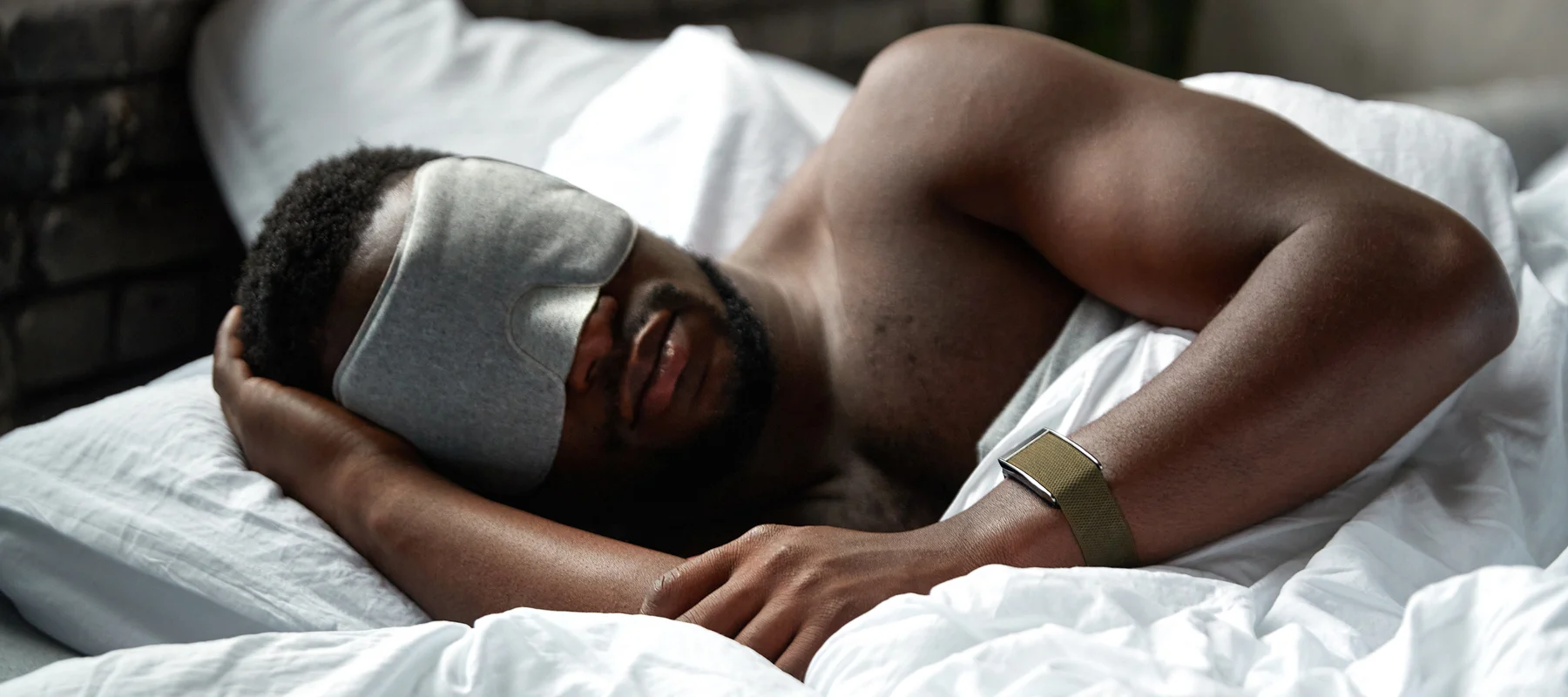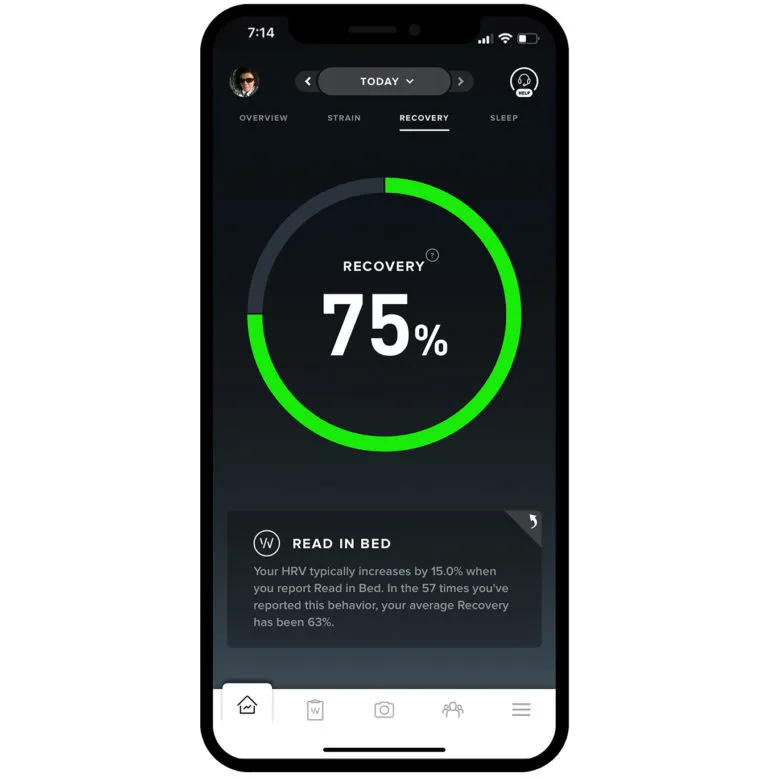Topics
- Article
- Sleep
12 Sleep Myths Debunked and One That May Be True

There are a lot of misconceptions around sleep. WHOOP looks at the science behind some of the most popular myths to discover if there is any truth behind these beliefs.
Some ideas about sleep are so ingrained into our collective consciousness that we think they must be true. However, scientific studies about human sleep have shown that many of the things we believe about sleep are false. We’ve looked at some of the biggest myths around sleep and debunked most of them.
Myth 1: Adults Need 8 Hours of Sleep Every Night
Debunked: Getting enough sleep is vital to cognition, performance and overall health. It allows the body to repair and restore itself in preparation for the day’s strain. Eight hours of sleep is the commonly accepted goal for adults, but 8 hours isn’t necessarily the correct amount of Zs for everyone. The National Sleep Foundation recommends that adults get between 7 and 9 hours of sleep per night. WHOOP members average slightly more than 7 hours of sleep each night. Women average 7:20 while men get 7:03 hours of sleep. However, how much sleep WHOOP members get and how much they need are not the same thing. Your sleep needs can change daily, based on factors including how much sleep you got the night before and the amount of exercise and stress you accumulated throughout the day. WHOOP quantifies your daily strain to help you determine how much sleep you need on a particular night. Based on that and leftover sleep debt (more on this below) from previous nights, the average nightly sleep need for WHOOP members is 8:34.
Myth 2: Time in Bed = Time Asleep
Debunked: Many people think that if they go to bed at 11 pm and wake up at 7 am they’re getting 8 hours of sleep. Unfortunately that’s not the case, and in reality if you’re in bed for 8 hours you're probably getting a lot closer to 7 hours of sleep. Disturbances (minor body movements) and waking periods can amount to close to an hour of lost sleep each night. WHOOP tracks these occurrences as you sleep so you can see how much sleep you’re actually getting.
Myth 3: Waking Up In the Middle of the Night Isn’t Normal
Debunked: While sleeping uninterrupted is a goal, it’s normal for even the best sleepers to have disturbances and even be awake for short periods of time. Wakings can be exacerbated by noise, artificial light, a partner’s movements and other causes. There is evidence that in some cultures our ancestors spent some of the late-night hours awake, having a first sleep and a second sleep with 1-2 hours between where they were awake and active. They still got enough sleep but did not generally try to sleep 7-9 hours straight like we do today. Learn More: Sleep Hygiene Tips from CrossFit’s Sleep Queen Brooke Wells
Myth 4: How Long You Sleep is All That Matters
Debunked: Duration is important, but it’s not everything. Sleep quality and sleep continuity are also vital to your overall health. Health issues such as sleep apnea and insomnia can cause disruptions in your sleep cycle. Even when you meet your sleep goals, you may still not feel refreshed the next day if your sleep cycles are interrupted.
Myth 5: You Can’t Catch Up on Sleep
Maybe true? Everyone has bad nights spent tossing and turning and staring at the clock. When you fail to get all the sleep your body needs you begin to accumulate sleep debt. Sleep debt is the amount of extra sleep you need because of insufficient sleep the night before. Naps can help you catch up, but you won’t gain any benefits if your afternoon snooze prevents you from sleeping at night. However, very short naps and napping for a full sleep cycle can enhance mental and physical performance, put you in a better mood and increase alertness. The “power nap,” an early afternoon nap between 10 and 20 minutes in length, allows you to enter light sleep but not a full sleep cycle. This can help you feel refreshed rather than groggy. The average length of a full sleep cycle is about 90 minutes. A 90-minute nap allows you to spend time in each sleep stage (light, deep and REM) and can help you feel rested and rejuvenated.
Myth 6: Watching TV or Using Your Phone are Good Ways to Relax Before Bed
Debunked: A bedtime routine can help you unwind from the day and trigger natural sleep hormones to tell your brain and body it is time for rest. However, your bedtime routine should not include watching TV or looking at your phone. Blue light from electronics directly affects human circadian rhythm. If you do watch TV or play with your phone at night, try wearing glasses that block blue light. Many phone models offer settings that alter the screen temperature to a warmer color filtering out blue light.
Myth 7: Alcohol Before Bed Helps You Sleep
Debunked: Drinking alcohol may put you to sleep, but it does not provide good sleep. The sedative effect of alcohol prevents you from reaching the restorative stages of sleep (see Myth 4 about sleep quality) as your body works to process the alcohol in your system. Even if you sleep for a long time after drinking, you won’t wake feeling rested.
Myth 8: Being Able to Fall Asleep Anytime is Healthy
Debunked: Being able to fall asleep at any time and anywhere is not a sign of being a good sleeper. It’s a sign of having sleep problems. While some people, including military personnel, have trained themselves to sleep at any time using specific techniques, dropping off to sleep at random times is different. It can be a sign of insomnia, circadian rhythm disorders, narcolepsy and even sleep apnea.
Myth 9: Lying in Bed With Your Eyes Closed Is as Good as Sleeping
Debunked: We all experience the occasional sleepless night, but lying there trying to sleep is not the same as sleeping, and it doesn’t have the same benefits. Sleep is a state in which we experience sensory detachment from our surroundings. It’s when our brains process the previous day’s activities and the body is rested, repaired and prepared for the next day. Rest, while it can be used to increase physical and mental well-being, does not involve the same levels of disengagement from surroundings as sleep. If you often find yourself awake at 3 am, try some techniques to help you fall asleep fast.
Myth 10: You Can Learn to Function Just as Well with Less Sleep
Debunked: You may be able to function on less nighttime sleep by taking a nap during the day, but that’s not the same as functioning on less sleep. In one study published in the journal Sleep, participants who cut their sleep to 6 hours a night suffered the same decreases in cognitive function and reaction time as people who went two full nights without sleep. The study found they did not adapt to the new sleep schedules, and they were generally unaware of their poor performance.
Myth 11: Snoring is Mostly Harmless
Debunked: Snoring has several causes, including anatomical, alcohol consumption, allergies, illness, and weight. Almost everyone snores occasionally, and it can be harmless to the snorer (although less so to anyone within hearing distance). But if the noise is accompanied by other symptoms, it may be time to see a sleep specialist. Symptoms such as pauses in breathing, gasping or choking at night, excessive daytime sleepiness, difficulty concentrating, and a sore throat or headache upon waking can be signs of obstructive sleep apnea (OSA). People with OSA are at risk of high blood pressure, heart disease and stroke, and have an increased risk of motor vehicle accidents due to lack of sleep.
Myth 12: Exercising at Night is Bad for Sleep
Debunked: Exercising at night has always been seen as bad for sleep, but a 2018 study suggests that evening workouts are fine, as long as you have a chance to wind down before bed. Researchers found that not only did evening exercise not affect the quality of sleep, it also appeared to help people fall asleep faster and spend more time in deep sleep—with the caveat that those who did high-intensity training less than an hour before bedtime had longer sleep latency—the length of time it takes you to fall asleep—and had poorer sleep quality. Exercise is no longer the realm of the morning person.
Myth 13: Reading in Bed Will Prevent You From Sleeping

WHOOP members see slight improvements in heart rate variability and recovery when they read before bed.
Debunked: A 2009 study showed that 6 minutes of reading a book reduced the subjects’ stress by 68% compared to other activities, including listening to music or taking a walk. Reading can distract your mind, allowing your muscles to relax and your breathing to slow. All of these things make you feel calmer and let you sleep. Don’t stay up all night reading though, aim for 20-30 minutes max and put the book down if you start feeling sleepy before that. What you read doesn’t matter as long as it’s interesting to you. Additionally, see Myth 5 about avoiding screens. Reading from a screen has a different effect. WHOOP members on average see a slight improvement in sleep data when reading before bed.
Debunk Your Personal Sleep Myths With WHOOP
WHOOP automatically detects exactly when you fall asleep each night, as well as the amount of time you spend awake, in light sleep and in the restorative stages, REM and deep sleep. By logging in the app the time you go to bed, WHOOP will measure your sleep latency. Sleep Planner uses your circadian rhythm to make recommendations on ideal bed and wake times to help you get high-quality, efficient sleep. Additionally, the WHOOP Journal lets you track variables like alcohol and caffeine, reading or using devices in bed, and more, allowing you to monitor your own sleep data and discover what helps you sleep and what doesn’t. Learn More: How Does WHOOP Measure Sleep